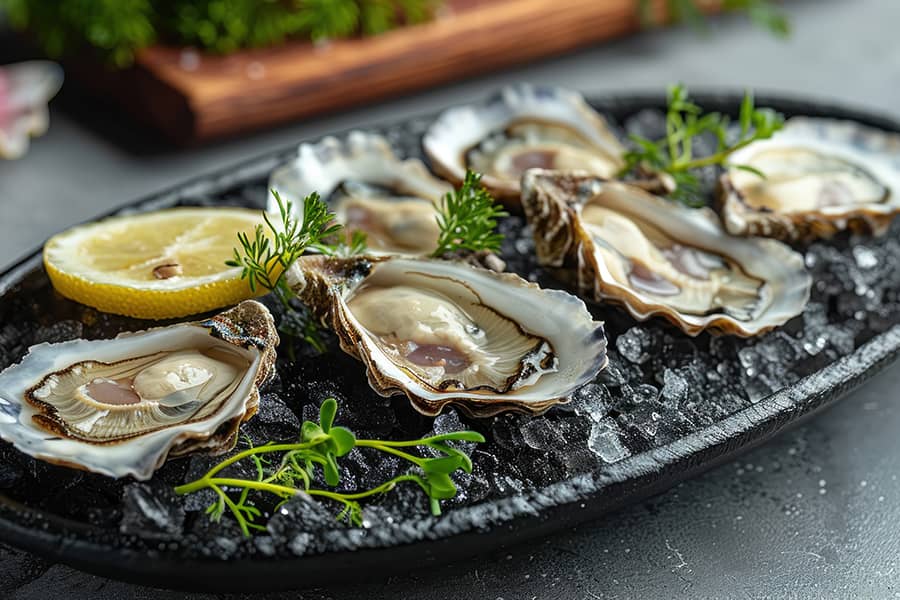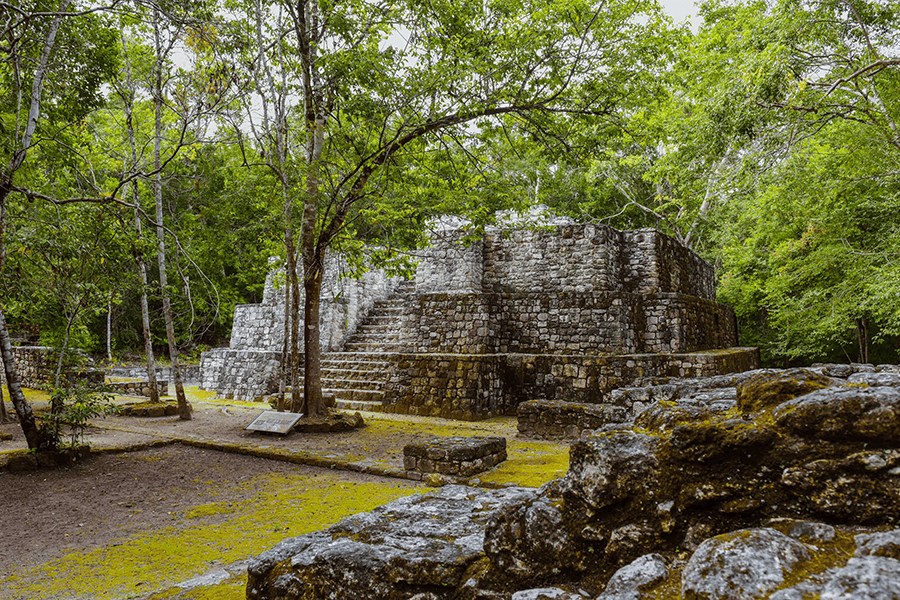The Tale of Charleston, Narrated Through a Gumbo of Oysters and Okra

Introduction: The Essence of Charleston’s Culinary Scene
Charleston’s culinary scene is a vibrant tapestry woven from centuries of history, culture, and innovation. Each dish tells a story—whether it’s the rich influence of Gullah cooking rooted in African traditions or the French-inspired techniques that have made their way into Lowcountry kitchens. This melting pot of flavors embraces authenticity while also inviting reinvention, offering a feast not just for the palate but for the soul.
Seafood reigns supreme in Charleston, with plump oysters and succulent shrimp taking center stage in many beloved recipes. But what truly sets this food tradition apart is its commitment to local sourcing; fishermen and farmers breathe life into each plate, infusing freshness that can only be born from nearby waters and fields. This connection creates an unparalleled sense of place—a conscious reminder that every meal is an experience deeply rooted in Charleston’s landscape and heritage. As chefs experiment with time-honored ingredients like okra and rice, they forge new narratives within this cherished Southern cuisine while paying homage to its storied past.
Historical Roots: Oysters in Lowcountry Culture
Oysters have long been the heartbeat of Lowcountry culture, threading through its history like strands in a woven basket. Indigenous tribes inhabited the coastal regions, relying on these bivalves not only for sustenance but as a means of trade and spiritual connection. As settlers arrived, they too integrated oysters into their diets, often gathering them during communal harvests that fostered kinship among neighbors. These gatherings hinted at the future culinary amalgamation that would define Charleston—a place where diverse influences—African, Caribbean, and European—marinated together over centuries.
The influence of oysters permeated beyond mere nourishment; they shaped social fabric and economic growth in the Lowcountry. In the late 19th century, bustling oyster shucking houses emerged along waterfronts, offering both employment opportunities for freedmen and accessible cuisine for all walks of life. With festivals revolving around oyster roasts popping up during this time, locals celebrated these mollusks not only as food but as an essential cultural touchstone—the very embodiment of community resilience and joie de vivre. Today’s artisans continue to honor this legacy by crafting dishes that spotlight local flavors while illuminating Charleston’s storied past with each briny bite—a true testament to how one humble oyster can tell a thousand tales within this rich gumbo of history.
Okra’s Role: A Southern Staple Explained
Okra, often cloaked in culinary stigma due to its unique texture and flavor, holds a revered place in Southern cuisine, particularly within the cultural tapestry of Charleston. This vibrant green pod is more than just an ingredient; it’s a symbol of resilience and adaptability shaped by centuries of history. Introduced to the region through the African diaspora, okra’s ability to thrive in warm climates made it a staple for families facing challenging agricultural conditions. It embodies a spirit rooted deeply in local traditions and resourcefulness.
In gumbo—a dish that tells its own rich story—okra serves multiple roles: thickener, flavor enhancer, and eye-catching pop of color against dark roux. Its characteristic mucilage adds depth not only to the dish’s consistency but also enhances the complex dance of flavors brought forth by seafood like oysters or shrimp. Beyond its role as an essential ingredient, okra has become interconnected with community gatherings, family dinners, and celebrations of heritage that resonate through generations. In every bite of this stew celebrated across kitchens in Charleston, there’s a reminder that what may seem humble can encapsulate legacy—not just on our plates but also in our hearts.
The Fusion: Blending Oysters and Okra Flavors
In the heart of Charleston, a culinary fusion emerges that celebrates both the briny depth of oysters and the comforting earthiness of okra. Picture this: freshly shucked oysters, their saline sweetness juxtaposed with the glossy texture of sautéed okra, creating a harmonious balance between sea and land. Together, they compose an intricate dance on the palate—a symphony that encapsulates lowcountry essence. The tender chew of okra brings forth a unique creaminess when incorporated into stews or gumbo, allowing it to cradle each oyster like its own treasure.
This marriage is not merely about flavor but also about heritage; both ingredients hold deep roots in Gullah culture and reflect the area’s rich history. As local chefs experiment with these quintessential components—perhaps by roasting oysters lightly seasoned with smoky paprika or folding them delicately into an ottis (a kind of gooey stew made primarily with okra)—they forge new narratives while honoring traditions. Every bite becomes a story, intertwining family recipes passed down through generations with modern interpretations that celebrate Charleston’s ever-evolving culinary landscape. Here lies a testament to resilience and creativity: amidst changing tides and tastes, this duo invites us to savor life within every delicious morsel.
Iconic Recipes: Must-Try Gumbo Variations
Gumbo, with its rich history and vibrant flavors, offers a canvas for culinary creativity, particularly in Charleston where seafood abounds. One iconic variation is the seafood gumbo, which celebrates the local bounty of shrimp, crab, and oysters. By slowly simmering these treasures with hearty vegetables like okra and bell peppers in a dark roux, you create a dish that captures the essence of Lowcountry waters—a true homage to Charleston’s maritime roots. The addition of smoked sausage enhances the depth of flavor while grounding it in Southern tradition.
Another exceptional twist is the duck and sausage gumbo, which presents an entirely different narrative through its earthy richness. In this rendition, tender chunks of duck meld seamlessly with spicy Andouille sausage to create layers of flavor that dance on the palate. Adding toasted filé powder at serving brings an aromatic freshness reminiscent of lush Louisiana bayous. Each spoonful tells stories not only of ingredients but also speaks to the cultural amalgamation inherent in Charleston’s gastronomy—where African influences blend harmoniously with French techniques and Creole spices.
For those seeking an unexpected delight, consider a vegetarian gumbo featuring seasonal vegetables like zucchini and corn combined with chickpeas for protein. This refreshing approach allows for creative expression while encompassing key elements like a dark roux made from whole grain flour or even gluten-free alternatives without sacrificing authenticity or flavor complexity. By exploring these variations, one can appreciate how gumbo transcends mere sustenance—serving instead as a delicious reflection of identity found within every bowl served up along Charleston’s bustling waterfronts.
Cultural Significance: Food as Community Connector
In Charleston, the act of gathering around a pot of gumbo transcends mere sustenance; it embodies a rich tapestry of shared traditions, stories, and identities. The dynamic interplay of local ingredients like oysters and okra speaks not just to culinary preferences but also to the histories that make this city unique. Each ingredient carries whispers of different cultures—African, French, Creole—that have mingled over centuries to create a dish celebrated for both its depth and complexity. As friends and families gather, they actively partake in an age-old ritual where flavor becomes memory, nourishing the body while simultaneously reinforcing social bonds.
Moreover, food serves as a powerful reminder that community is built on collaboration and reciprocity. Whether it’s preparing gumbo at home or enjoying it at local festivals, these shared dining experiences foster connections among neighbors from diverse backgrounds. The communal nature of sharing meals opens doors to conversations about heritage and identity—forging relationships that would otherwise remain unexplored. In Charleston’s bustling eateries or during lively family gatherings, each spoonful evokes not only satisfaction but also solidarity—a delicious testament to how food can bridge divides and weave unity into the fabric of community life.
Local Markets: Sourcing Fresh Ingredients in Charleston
Strolling through Charleston’s vibrant local markets, a sensory feast unfolds with every step. The air is fragrant with the scent of ripe tomatoes and fresh herbs, infused with the salty tang of nearby waters where the day’s catch is still swimming. Vendors display their colorful bounty—from plump peaches to luscious figs—each ingredient a testament to the region’s rich agricultural heritage. Engaging with these local producers offers not just access to superior quality but also a story behind each item; it’s about understanding the land that nurtured it and the hands that cultivated it.
One cannot overlook the charm of seasonal offerings at the Charleston City Market and GrowFood Carolina, where pride in sustainable practices runs deep. Here, chefs and home cooks alike are drawn to heirloom varieties of vegetables—like purple okra—that add a splash of color and nutrition to any dish while embracing culinary traditions that highlight what makes Lowcountry cuisine unique. Furthermore, participating in this ecosystem fosters a sense of community: as you share recipes or tips gleaned from vendors, you become part of something larger—a living tapestry woven together by shared passion for food.
Eating locally sourced ingredients isn’t merely an environmental choice; it’s an exploration into Charleston’s culinary identity. With each visit to these markets, you are encouraged to embrace spontaneity—what might inspire your next pot of gumbo could be an unexpected find among freshly harvested greens or artisanal spice blends from local purveyors—each bite pulling deeper into flavors shaped by history and place. In this city where every meal tells a story, sourcing fresh ingredients from local markets is not just practical—it transforms your cooking into a celebration of culture itself.
Chef Spotlight: Influential Culinary Artists Today
One of the most influential culinary artists reshaping Charleston’s food scene is Chef Frank Lee, whose commitment to local ingredients and innovative techniques has elevated traditional Lowcountry fare. With a background rooted in both classical French cuisine and Southern home cooking, he brilliantly bridges the gap between old and new. His transformative dishes often highlight neglected regional ingredients, such as heirloom varieties of okra or wild-caught oysters, showcasing their unique flavors while advocating for sustainable sourcing practices that protect Charleston’s rich culinary heritage.
Equally compelling is Chef Tia Williams, whose vibrant take on Creole influences revitalizes the city’s dining landscape. Through her pop-up concepts and community engagement, she brings a fresh narrative to Charleston’s historic kitchens by celebrating cultural diversity in every bowl. By incorporating her grandmother’s recipes with contemporary twists—such as spicy miso-broiled oysters—she not only honors tradition but also sparks conversations about food equity and representation within the culinary arts. It is these dynamic talents that are crafting an evolving dialogue around what it means to be truly Charleston.
Events and Festivals: Celebrating Food Heritage Together
In Charleston, events and festivals serve as vibrant canvases showcasing the city’s rich food heritage. The annual Spoleto Festival USA not only evokes artistic expressions through theater and music but also becomes a culinary treat, featuring local chefs who reinterpret traditional Southern dishes using heirloom ingredients. Imagine savoring an innovative version of shrimp and grits while surrounded by performances that echo the city’s deep-rooted cultural tapestries. Each plate tells a story of community resilience and creativity, illustrating how cuisine evolves yet remains tethered to its historical roots.
Another example is the Lowcountry Oyster Festival, where fellowship flows as abundantly as the briny bivalves themselves. This celebration transcends mere gastronomy; it invites all to participate in spirited shucking contests and tastings that reflect generations of maritime traditions. As attendees gather around communal tables lined with steaming platters, they share tales woven from family recipes passed down through time, connecting past with present in a mosaic of flavors. Through these gatherings, Charleston not only keeps its culinary heritage alive but also cultivates a sense of belonging among those who partake in this collective feast—reminding us that food is more than sustenance; it’s an ongoing narrative about who we are and where we come from.
Conclusion: Embracing Charleston’s Rich Culinary Legacy
Charleston’s culinary legacy is not just a feast for the senses but an exploration of the city’s soul, woven together by generations of cultural influences. From the French Huguenots who introduced techniques of delicate pastry making to the African slaves whose resourceful adaptations birthed iconic Southern dishes, every bite tells a story steeped in history. Embracing this rich tapestry allows us to appreciate not only what graces our plates but also the resilient spirit behind it—an ever-evolving narrative that reflects both tradition and innovation.
As we savor fragrant bowls of gumbo or enjoyed shucked oysters on ice, we are invited to participate in Charleston’s ongoing dialogue with its past while contributing to its future. Locally-sourced ingredients reveal a commitment to sustainable practices that connect today’s chefs with farmers, fishermen, and artisans who keep the traditions alive. By embracing Charleston’s rich culinary legacy, we gain insights into broader themes: community resilience, identity crafting through cuisine, and the power of food as a unifying force transcending barriers. Engaging with this vibrant food scene enriches our understanding and appreciation not just for Charleston itself but for all cultural landscapes shaped by time and tenacity.




